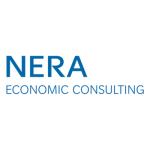Two contradictory TP models in the automotive supplier industry
Original equipment manufacturer (OEM) customers generally request to be invoiced by their suppliers from manufacturing sites geographically close to the OEM’s own plants. For the transfer pricing (TP) of automotive suppliers, this means the relationship between the headquarter entity (HQ) and local manufacturing entities is of paramount importance. However, in practice, different companies have developed two very different – even contradictory – approaches.
The first approach is a decentralised operating model in which the local manufacturers are considered the entrepreneurial entities. They license the technology for a (typically low) royalty rate and source certain central support services from the HQ on a (also low) cost-plus basis. Typically, both transactions will be benchmarked through traditional plain-vanilla database searches. Consequently, most business upside chances and downside risks accrue to the manufacturing entities, which, according to this model, also supposedly control the pursuant risks.
The opposite approach is a centralised operating model in which the local manufacturer is effectively considered a (low-risk) contract manufacturer, while the HQ company earns the bulk of the residual profit. This is achieved by flexible royalty payments and service charges such that the manufacturer is left with benchmarked low-risk contract manufacturing returns, irrespective of local market developments and risks such as capacity utilisation. This implies that the HQ is presumed to control the entrepreneurial risks that impact the business development of the manufacturer.
Increasing tax risks due to the DEMPE analytical framework
Tax auditors in countries with a strong automotive industry often find both approaches in the various groups they audit – even between competing groups with similar business models and similar decision-making by the respective HQ and local manufacturer. Such inconsistencies suggest that the TP must be flawed in one group or the other – or both.
Tax authorities interested in high local tax revenues can be biased towards certain outcomes. Tax inspectors who audit outbound HQ companies may consider central entrepreneurial models to be more appropriate, while tax inspectors who audit inbound manufacturing companies may have a bias for decentralised license manufacturing structures. These conflicting views invite cherry-picking by tax authorities and makes dispute resolution challenging, as tax authorities will clash with fundamentally opposite views.
The challenge presented by these conflicting models is increased by the recent developments in TP legislation that give tax authorities more powers to reassess the taxpayer’s methodology (see previous article on the new German TP Guidelines). In particular, the so-called DEMPE concept implies TP should be based on contributions by entities to the development, enhancement, maintenance, protection, and exploitation of the business value drivers. Since these contributions can be interpreted relatively broadly, it becomes easier to challenge either of the opposite approaches that are so prevalent in practice.
A realistic TP framework
The pragmatic solution is to recognise that, in a post-BEPS world where potential DEMPE contributions could be legitimately suspected to come from entities across the value chain, having an arbitrary black-and-white view about decision-making and risk control functions is not a sustainable or realistic position to achieve dispute resolution and prevent double taxation of multinational corporations (MNCs).
Even for companies where decisions are predominantly concentrated at the HQ level, value creation is, to a significant degree, the outcome of cooperative cross-fertilisation of functions across countries. For example, central research and development (R&D) at HQ benefits from ongoing interfaces, technical know-how and data provision from manufacturing operations in different territories.
A new technological innovation from HQ is pointless if it cannot be embedded into efficient mass manufacturing processes; local manufacturing engineers contribute with their know-how and experience to such efficient integration of technologies. Risks can be controlled centrally at HQ levels through appropriate contracts but, in the end, risk must also be mitigated at the local level. In increasingly globalised virtual functional leadership teams, local managers are often able to influence decisions made at the HQ, and they do not just execute central orders.
Conversely, local manufacturers often critically rely on centrally provided technology, which generally cannot simply be relegated to a secondary ‘routine intangible’ role. Moreover, the central HQ in practice does not usually provide only routine services, but is deeply involved in managing central value creation activities and key risk-taking decisions.
Therefore, entrepreneurial value results not only from intangible assets in the traditional narrow sense (i.e., protected rights like patents or trademarks), but from synergetic collaboration between functions. The value creation principle embedded in the 2017 OECD TP Guidelines suggests that synergetic benefits should be shared in proportions to the marginal contributions to the respective contributing parties (i.e., the HQ and the local manufacturers). It remains to be determined how such relative marginal contributions can be assessed in practice.
A practical solution approach
Literature on industrial economics and applied practice across a wide range of industries show that concepts from cooperative game theory provide useful tools for fair economic profit allocation in synergetic cooperation settings. Based on the individual case at hand, cooperative game theory can help determine royalty payments and service charges that provide consensual middle ground in comparison to the two extreme solutions usually observed in practice and described at the beginning of this article.
By such solutions, which are firmly aligned by OECD principles to consider DEMPE contributions, MNCs can occupy a middle ground that makes it much easier for tax authorities to agree in tax controversy. An innovative form of applied game theoretical analysis dramatically reduces the costs of subsequent tax controversy for an MNC.
The authors have successfully adopted the ‘Shapley Value’ concept as a cooperative game theoretical application in several cases to solve tax controversies in Germany. While the approach is innovative, German tax authorities have appreciated the sound balance from such economic analysis and were willing to settle based on the results of the submitted analysis.
Yves Hervé
Managing director, NERA Economic Consulting
Philip de Homont
Director, NERA Economic Consulting
Salem Saljanin
Consultant, NERA Economic Consulting














